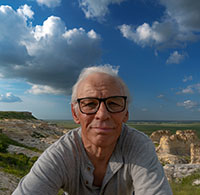The arrival of cooler temperatures heralds the onset of fall, bringing with it one of nature’s most spectacular events—the annual migration of birds. Across Kansas and Missouri, enthusiasts are preparing for the seasonal influx of avian species as they make their way to warmer climates. For many, Loess Bluffs National Wildlife Refuge (NWR) in Missouri and Quivira NWR in Kansas are prime locations to witness this breathtaking phenomenon.
Loess Bluffs NWR, located in the Missouri River floodplain near Mound City, Missouri, is renowned for its extensive wetlands, which serve as a critical stopover for migrating birds. Each fall, as the air turns crisp, the refuge comes alive with the sights and sounds of thousands of waterfowl, including ducks, geese, and swans. The diverse habitats, including marshes, grasslands, and woodlands, provide ideal conditions for these birds to rest and refuel during their long journey south.
Among the most anticipated visitors at Loess Bluffs are Bald Eagles. As the migration of waterfowl peaks, these majestic raptors follow closely behind, drawn by the abundance of prey. In some years, as many as 800 Bald Eagles have been documented at the refuge, creating a spectacle that attracts bird watchers from across the region. The sight of these powerful birds soaring above the wetlands, their sharp eyes scanning for fish and other prey, is one that never fails to inspire awe.
Quivira NWR, located in the heart of Kansas, is another crucial stopover point for migrating birds. Known for its vast, shallow wetlands and salt marshes, Quivira provides a haven for a wide variety of bird species. The refuge is particularly famous for hosting large flocks of Sandhill Cranes during the fall migration. These tall, elegant birds, with their distinctive calls and graceful flight, are a highlight for visitors to the refuge. On rare occasions, Quivira also serves as a stopover for Whooping Cranes, one of the rarest and most endangered bird species in North America.
As the landscape of Quivira transforms with the changing season, so too does the birdlife. The cooler temperatures and shorter days signal to the cranes and other migratory species that it is time to move southward. The wetlands of Quivira, with their rich food sources and safe resting areas, provide an essential sanctuary for these birds as they continue their journey.
The fall migration at both Loess Bluffs and Quivira NWRs is more than just a spectacle; it is a vital part of the natural cycle, ensuring the survival of countless bird species. Whether you're there for the thrill of spotting a rare species or simply to enjoy the serenity of the natural world, the fall migration is an event not to be missed. As the days grow shorter and the air takes on a crisp edge, both refuges will once again become gathering places for both birds and bird watchers alike.
Further Reading





